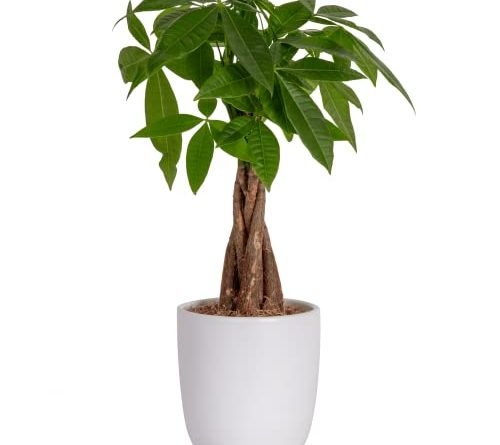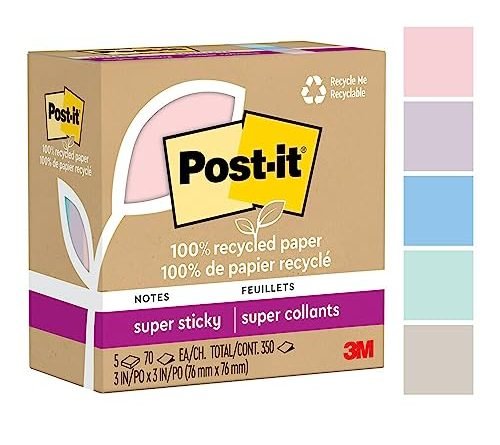
Hey there! Are you tired of your dull and lifeless office space? Well, we’ve got just the thing to brighten up your workspace and boost your mood – office plants! Yes, you heard that right. Adding some greenery to your office not only adds a touch of nature but also improves air quality and reduces stress. But here’s the thing – keeping office plants alive and thriving can be a bit tricky. That’s why we’ve put together this blog post to guide you on how to care for your office plants like a pro. Get ready to transform your workspace into a vibrant and refreshing oasis!
Green up your workspace with these popular and low-maintenance office plants



Why Office Plants are Important
In today’s fast-paced work environment, it’s crucial to create a space that promotes productivity, well-being, and creativity. One often overlooked but highly effective way to achieve this is by incorporating office plants into your workspace. Not only do they add a touch of natural beauty, but they also offer numerous benefits that can enhance your overall work experience. Let’s delve into the reasons why office plants are essential for a healthy and thriving workplace.



Improved Air Quality
One of the most significant advantages of having office plants is their ability to improve air quality. Plants naturally filter the air by absorbing harmful toxins and releasing oxygen, leading to cleaner and more breathable indoor air. Here’s how they accomplish this:
- Removal of Volatile Organic Compounds (VOCs): Office spaces often harbor VOCs emitted by furniture, carpets, and cleaning products. Plants such as the Peace Lily, Spider Plant, and Snake Plant are excellent at absorbing these harmful chemicals.
- Increased Humidity: Many office buildings have dry air due to air conditioning, which can lead to discomfort and respiratory issues. Plants release moisture through a process called transpiration, which helps combat dryness and improves overall humidity levels.
Enhanced Productivity
Creating a productive workplace is a top priority for any business. Office plants can play a significant role in boosting productivity and focus among employees. Here’s how:
- Reduced Stress: Studies have shown that the presence of plants in the office can reduce stress levels and promote relaxation. This can lead to improved concentration, creativity, and ultimately, higher productivity.
- Noise Reduction: Certain plants, such as the Areca Palm and the Rubber Plant, can help absorb sound and reduce background noise. This is particularly beneficial in open-plan offices where excessive noise can be a distraction.
Creating a Calm and Pleasant Environment
Aesthetics play a vital role in creating a positive work atmosphere. Office plants can transform a mundane workspace into a vibrant and welcoming environment. Here’s how they contribute to a calm and pleasant setting:
- Visual Appeal: The vibrant colors and varied foliage of office plants can instantly brighten up any space, making it more visually appealing and inviting.
- Natural Connection: Humans have an innate connection with nature, and being surrounded by plants can evoke a sense of tranquility and well-being. This connection can help reduce anxiety and improve overall mood, leading to a happier and more engaged workforce.
Choosing the Right Office Plants
When selecting office plants, it’s essential to consider factors such as lighting conditions, maintenance requirements, and space availability. Here are a few popular office plants known for their adaptability and ease of care:
- Snake Plant (Sansevieria): This resilient plant thrives in low light conditions and is known for its air-purifying properties.
- Pothos (Epipremnum aureum): Pothos is a trailing vine that can tolerate a wide range of lighting conditions, making it suitable for various office environments.
- ZZ Plant (Zamioculcas zamiifolia): With its glossy leaves and ability to thrive in low light, the ZZ plant is an excellent choice for adding a touch of greenery to dimly lit corners.
Choosing the Right Office Plants
When it comes to creating a pleasant and productive office environment, incorporating plants can make a significant difference. Not only do office plants add a touch of greenery to the space, but they also have numerous benefits such as improving air quality, reducing stress levels, and increasing overall well-being. However, not all plants are suitable for an office setting, so it’s crucial to choose the right ones that can thrive in the specific conditions of your workspace. In this article, we will guide you through the process of selecting the perfect office plants based on lighting conditions, maintenance requirements, and suitability for the office space.



Lighting Conditions
One of the most critical factors to consider when choosing office plants is the lighting conditions in your workspace. Different plants have varying light requirements, so it’s important to match them with the available natural or artificial light sources in your office. Here are some guidelines to help you make the right choice:
- Low-light plants: If your office has minimal natural light or lacks windows, opt for plants that can thrive in low-light conditions. Some excellent choices include:
- Snake Plant (Sansevieria)
- ZZ Plant (Zamioculcas zamiifolia)
- Peace Lily (Spathiphyllum)
- Chinese Evergreen (Aglaonema)
- Moderate-light plants: Offices with moderate light levels from windows or well-placed artificial lights can accommodate a wider range of plant varieties. Consider these options:
- Pothos (Epipremnum aureum)
- Spider Plant (Chlorophytum comosum)
- Dracaena (Dracaena spp.)
- Philodendron (Philodendron spp.)
- High-light plants: If your office benefits from ample natural light or strong artificial lighting, you can choose plants that prefer brighter conditions. Some high-light plant options include:
- Areca Palm (Dypsis lutescens)
- Ficus Tree (Ficus benjamina)
- Rubber Plant (Ficus elastica)
- Bird of Paradise (Strelitzia reginae)
Maintenance Requirements
Considering the maintenance requirements of office plants is crucial to ensure their longevity and health. If you have limited time or resources for plant care, it’s best to choose low-maintenance options. Here are some low-maintenance office plants to consider:
- Snake Plant: This resilient plant requires minimal watering and can tolerate low-light conditions.
- ZZ Plant: With its ability to thrive in low light and survive with infrequent watering, the ZZ Plant is an excellent choice for busy offices.
- Pothos: Pothos plants are known for their adaptability and can survive in various lighting conditions. They only require moderate watering and occasional pruning.
On the other hand, if you have a dedicated plant care team or are willing to invest more time and effort into maintenance, you can consider plants with higher maintenance requirements, such as:
- Ficus Tree: Ficus trees require regular watering and benefit from occasional misting to increase humidity levels.
- Peace Lily: These elegant plants require consistent watering and prefer higher humidity levels, making them ideal for offices where plant care is a priority.
- Bird of Paradise: While this striking plant requires bright light, it also needs regular watering and occasional fertilization to thrive.
Suitability for the Office Space
Beyond lighting and maintenance requirements, it’s essential to consider the suitability of office plants for your specific workspace. Factors such as available space, air circulation, and potential allergies should be taken into account. Here’s what to consider:
- Size: If you have limited space, choose compact plants like the Snake Plant or Peace Lily that won’t overcrowd the area.
- Air circulation: Consider plants with air-purifying properties, such as the Spider Plant or Chinese Evergreen, to improve the overall air quality in your office.
- Allergies: If any employees have allergies, it’s best to avoid plants with heavy pollen or strong scents, such as certain types of lilies or jasmine.
By taking these factors into consideration, you can select office plants that not only thrive in your workspace but also contribute to a welcoming and productive environment for everyone.
Remember, incorporating plants into your office is a long-term investment that requires ongoing care and attention. Regularly assess the health of your plants, adjust their care routines as needed, and enjoy the benefits they bring to your workspace.
Watering and Feeding Your Office Plants
Having plants in your office not only adds beauty and freshness to the space, but they also contribute to a healthier indoor environment. However, to keep your office plants thriving, it’s essential to ensure they receive proper watering and feeding. In this article, we’ll guide you through the best practices for watering and feeding your office plants, helping you maintain healthy and vibrant greenery in your workspace.
Watering Your Office Plants
Proper watering is crucial for the health of your office plants. Here are some key tips to keep in mind:
Determine the Watering Frequency
- Different plants have varying water requirements. Research the specific watering needs of each plant in your office.
- Factors like humidity, temperature, and sunlight exposure can influence watering frequency. Adjust accordingly.
Check the Soil Moisture
- Before watering, check the moisture level of the soil by inserting your finger up to the first knuckle. If it feels dry, it’s time to water.
- Avoid overwatering by ensuring the soil is not already saturated. Overwatering can lead to root rot and other plant health issues.
Watering Techniques
- Use room temperature water to avoid shocking the plants.
- Water the soil directly, avoiding the leaves to prevent potential fungal growth.
- Ensure the water reaches the root zone of the plant, promoting healthy growth.
Self-Watering Systems
- Consider using self-watering systems or planters with built-in water reservoirs for convenience.
- These systems regulate water supply, preventing overwatering or underwatering.
Feeding Your Office Plants
In addition to proper watering, feeding your office plants with the right nutrients is essential for their growth and overall health. Here’s what you need to know:
Choosing the Right Fertilizer
- Select a fertilizer specifically formulated for indoor plants.
- Opt for a balanced fertilizer, such as a 10-10-10 ratio, which provides equal amounts of nitrogen, phosphorus, and potassium.
- Organic fertilizers, like fish emulsion or compost tea, can be a great option for those preferring natural alternatives.
Fertilizing Frequency
- Follow the instructions provided by the fertilizer manufacturer, as each product may have different recommendations.
- In general, indoor plants require fertilization every 4-6 weeks during the growing season (spring and summer).
Application Techniques
- Dilute the fertilizer according to the package instructions to avoid burning the roots.
- Apply the fertilizer to the soil around the base of the plant, ensuring it doesn’t come into direct contact with the leaves.
- Water the plant after fertilizing to help distribute the nutrients evenly.
Avoiding Common Mistakes
To help you maintain healthy office plants, here are some common mistakes to avoid:
- Overwatering: Excess water can drown the roots and lead to root rot. Always check the soil moisture before watering.
- Underwatering: Insufficient water can cause wilting and stunted growth. Monitor your plants regularly and water as needed.
- Using the Wrong Fertilizer: Using the wrong type or concentration of fertilizer can harm your plants. Choose the appropriate fertilizer for indoor plants.
Remember, each plant is unique, so it’s important to research and understand the specific care requirements for your office plants. By following these watering and feeding techniques, your office plants will thrive, creating a more pleasant and healthier workspace for everyone.
Maintaining and Troubleshooting
Office plants can bring life and vibrancy to any workspace, but just like any living thing, they require regular maintenance and care. In this section, we’ll discuss some common issues that office plants may face, such as pests, diseases, and yellowing leaves. We’ll provide you with tips and tricks to identify and address these problems, ensuring that your office plants stay healthy and thriving.
Identifying Pests
Pests can wreak havoc on your office plants, causing damage to leaves, stems, and even the roots. Here are some common pests you may encounter and how to identify them:
- Mealybugs: Look for small, white, cotton-like clusters on the leaves, stems, and undersides of your plants.
- Spider mites: These tiny creatures leave a fine webbing on the leaves and cause yellow or brown spots.
- Fungus gnats: These small flying insects are attracted to moist soil and lay their eggs there. Look for tiny black flies around your plants.
- Aphids: Aphids are small, soft-bodied insects that come in various colors. They cluster on new growth and leave behind sticky residue.
Dealing with Pests
Once you’ve identified the pests infesting your office plants, it’s time to take action. Here are some effective ways to get rid of them:
- Natural predators: Introduce beneficial insects like ladybugs or lacewings that feed on pests.
- Neem oil: Mix neem oil with water and spray it on the affected areas to kill pests.
- Insecticidal soap: Use a mild insecticidal soap solution to wash off pests from your plants.
- Sticky traps: Place sticky traps near your plants to catch flying insects like fungus gnats.
Common Diseases
In addition to pests, office plants can also be susceptible to various diseases. Here are a few common ones and how to identify them:
- Powdery mildew: Look for a white, powdery substance on the leaves, which can cause them to become distorted or discolored.
- Root rot: This disease is caused by overwatering, leading to brown and mushy roots and wilting foliage.
- Leaf spot: Leaf spot appears as small, dark spots on the leaves, which gradually enlarge and turn yellow or brown.
Preventing and Treating Diseases
Prevention is key when it comes to plant diseases. Here are some preventive measures and treatments:
- Proper watering: Avoid overwatering to prevent root rot. Ensure the soil is well-drained.
- Good air circulation: Provide adequate ventilation to prevent the spread of diseases like powdery mildew.
- Remove infected leaves: Prune and discard infected leaves to prevent diseases from spreading further.
- Fungicides: In severe cases, the use of fungicides can help control certain plant diseases.
Yellowing Leaves
Yellowing leaves can be a sign of various issues, including nutrient deficiencies, overwatering, or lack of sunlight. Here’s how to troubleshoot and address this problem:
- Nutrient deficiencies: Use a balanced fertilizer to provide essential nutrients to your plants.
- Overwatering: Ensure proper drainage and adjust your watering schedule accordingly.
- Insufficient sunlight: Move your plant to a brighter location or consider using artificial grow lights.
Wrapping it up: The importance of regular care for your leafy coworkers
In conclusion, taking care of your office plants is a small but impactful way to enhance your workspace. By selecting the right plants, providing them with proper care, and maintaining them regularly, you can create a vibrant and inviting atmosphere. Not only will these plants improve the aesthetic appeal of your office, but they will also contribute to your overall well-being and productivity. So why wait? Start nurturing your office plants today and enjoy the numerous benefits they bring.






